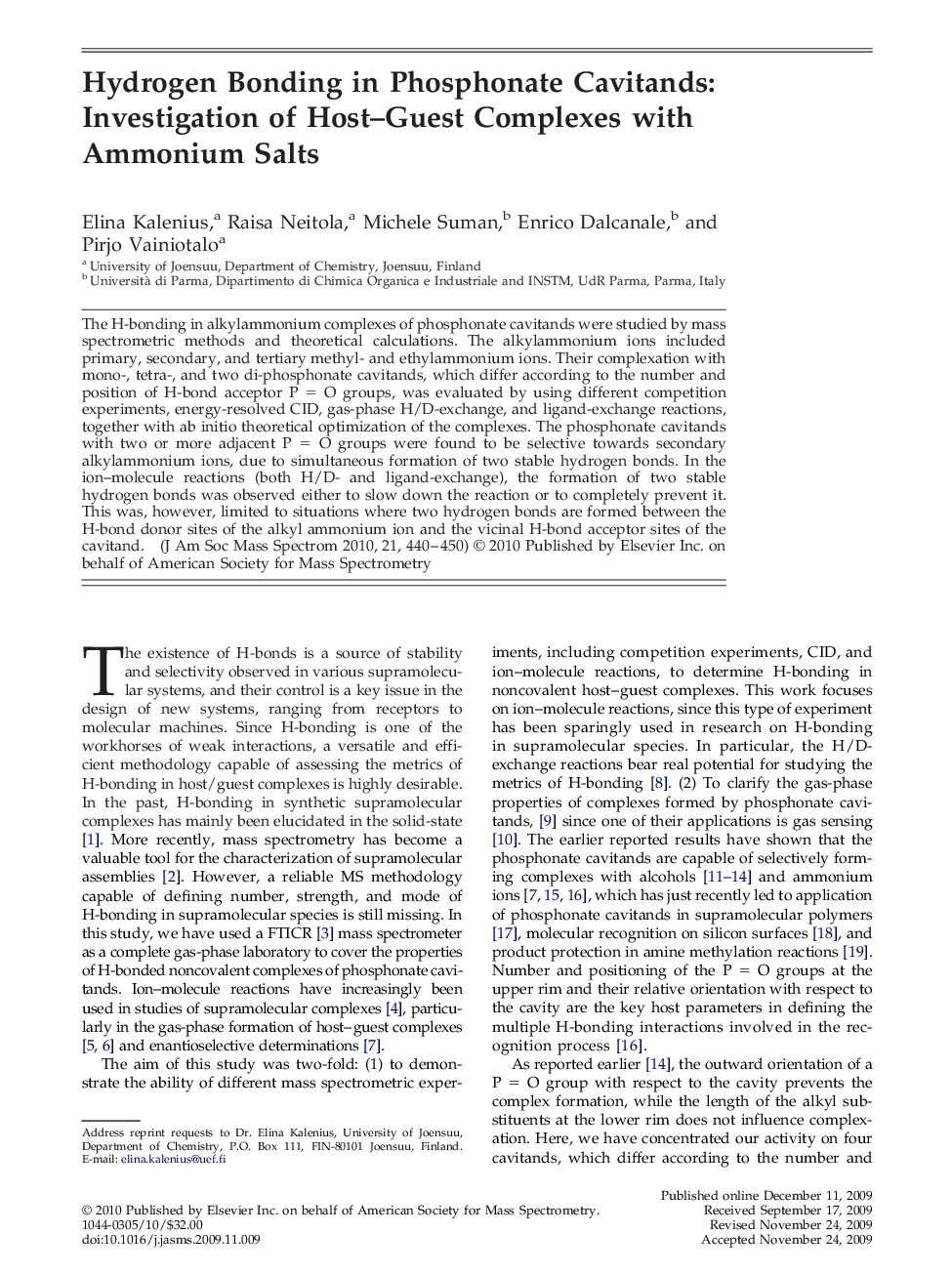| Article ID | Journal | Published Year | Pages | File Type |
|---|---|---|---|---|
| 1196353 | Journal of the American Society for Mass Spectrometry | 2010 | 11 Pages |
The H-bonding in alkylammonium complexes of phosphonate cavitands were studied by mass spectrometric methods and theoretical calculations. The alkylammonium ions included primary, secondary, and tertiary methyl- and ethylammonium ions. Their complexation with mono-, tetra-, and two di-phosphonate cavitands, which differ according to the number and position of H-bond acceptor P = O groups, was evaluated by using different competition experiments, energy-resolved CID, gas-phase H/D-exchange, and ligand-exchange reactions, together with ab initio theoretical optimization of the complexes. The phosphonate cavitands with two or more adjacent P = O groups were found to be selective towards secondary alkylammonium ions, due to simultaneous formation of two stable hydrogen bonds. In the ion–molecule reactions (both H/D- and ligand-exchange), the formation of two stable hydrogen bonds was observed either to slow down the reaction or to completely prevent it. This was, however, limited to situations where two hydrogen bonds are formed between the H-bond donor sites of the alkyl ammonium ion and the vicinal H-bond acceptor sites of the cavitand.
Graphical AbstractH-bonding in alkylammonium complexes of phosphonate cavitands was studied by ligand- and H/D-exchange reactions, theoretical calculations, competition, and CID experiments.Figure optionsDownload full-size imageDownload high-quality image (106 K)Download as PowerPoint slide
